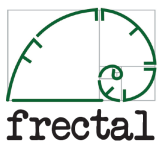Amidst the complexity simple patterns emerge
Having had a look across the fields of Emergency Medicine, Management and Information Technology, what simple patterns emerge from that exploration?
Well for a start I hope it is reasonable to conclude that each of the three fields complies with the Cynefin Framework.
In drawing that conclusion, I would suggest that Cynefin offers a wide variety of disciplines a common/generalisable framework to explore their related challenges.
My own further interpretation of the Cynefin framework is that the chaos/complex/complicated/simple elements can be further explained as the key phases of change/evolution/development.
-Chaos may occasionally be the prevailing conditions for change, but order can emerge from the chaos over time, under the right leadership conditions.
-Complex patterns can be observed and identified and even harnessed to an extent particularly if a group with multiple perspectives cooperate
-Complicated elements that emerge from amidst the complexity can then be analysed and over time that analysis becomes part of a related body of knowledge that a greater number of people can reuse.
-Simple elements can also emerge, and given enough time those simple elements can be taught further down the educational tree.
This may appear an abstract construct but remember that once upon a time men has very limited understanding of the world amidst the chaos of the world.
In early years some of our ancestors thought of the world being made up of 4 elements (earth, air, fire and water). Over time others then explained that in fact we have 118 core elements that now make up the periodic table.
When once human anatomy was not fully understood, over time we have looked deeper to see cells amidst our human makeup, they in turn highlighted cell nuclei within cells, which contain the spiral helix of DNA, which in turn is made up of 4 key bases (“A, C, G, T”). So over time our perspective of the world changes and again I find the chaos, complex, complicated, simple elements a useful means to understand our changing knowledge..
We can also explore the Cynefin domains from a simple start towards chaos..
In tackling common problems humans (who are born to innovate) usually find the simplest solution that tackles a common local problem.
As that innovation spreads its wings a more complicated framework may be built up around it.
A deep understanding of complex domains can uncover frameworks that are complex systems ready and scale beautifully to foster both reusability and diversity. e.g. the beauty of DNA highlights that while it has “simple” origins, i.e. ACGT bases, these then contribute to the double helix of DNA, which helps to build proteins, which form biological structures then life forms etc.
In contrast if the very foundations of an innovation are not able to address the tension between diversity and reusability, the challenges of scaling up and then maintaining solutions becomes a complex challenge that can end up in chaos.
In exploring patterns in evolution, we note a pattern of iterative movement from chaos to complex diversity to complicated specialisations with simple reusable components.
We also note that periods of history see shifts from chaos through complex politics to complicated organisational arrangements with simple elements that bind a culture together.. until a disruptive force as the limits of progress from the first iteration are found and the state shifts back to chaos and so on … on an iterative basis as civilisations and mankind slowly move towards ongoing refinement.
These fits with the spiral/evolutionary pattern of development that is seen in so many fields of life, as is fitting with our widest understanding of development on earth.
Indeed there is a principle related to spiral development worth mentioning here, i.e. the Pareto principle (or the 80:20 rule), which may be explained as 80% of the benefit comes from 20% of the initial effort, while the remaining 20% of the benefit requires 80% of the effort…
Indeed spiral/cyclical patterns are all around us, in the historical world (history repeating itself), the mathematical world (e.g. Fibonacci numbers), the medical world (e.g. the cardiac cycle, DNA helix), management world (e.g. PDCA cycle) and the software world (Boehm’s spiral model). These should be understood to point to the commonality across all human disciplines of endeavour.
Indeed I would suggest this single observation, that spiral cyclical patterns fit with the natural order of change is the key bottom line I would like to move on with…
Having explored the fields of Medicine, Management and Information Technology, from a range of perspectives from simple to complicated to complex to chaotic, let us now move onto look at the common challenge of change.
After exploring the complex challenge of change, we will focus on some key elements within (esp. process improvement and information technology) before returning to the healthcare field to look at related keys to the future of healthcare reform.
References
http://www.annoyingdesign.org/blog/2008/06/17/design-and-a-theory-of-everything/
http://en.wikipedia.org/wiki/Ammonite
http://en.wikipedia.org/wiki/Fibonacci_number
http://en.wikipedia.org/wiki/Pareto_principle
http://en.wikipedia.org/wiki/Spiral_model
http://www.patternsinnature.org/Book/ComplexSystems.html
Wright R (2000) “Non Zero: History, Evolution and Human Cooperation”





Leave a comment